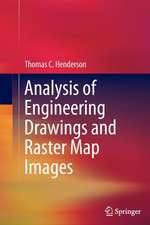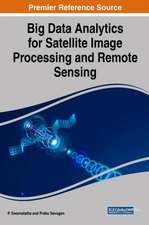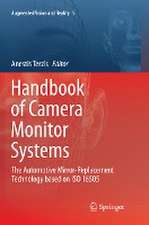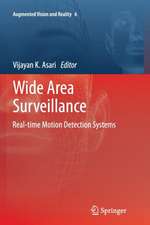Human Factors and Design
Autor Yuri Spirochkinen Limba Engleză Paperback – mar 2024
The book is interdisciplinary in nature and intended mainly for designers of technical systems, aiming to assist the specialists in understanding the issues of human participation in life cycle of these systems. The examples given are intended to benefit from experiences of not one, but a number of industries.
| Toate formatele și edițiile | Preț | Express |
|---|---|---|
| Paperback (1) | 570.40 lei 38-44 zile | |
| Springer Nature Singapore – mar 2024 | 570.40 lei 38-44 zile | |
| Hardback (1) | 931.86 lei 6-8 săpt. | |
| Springer Nature Singapore – 28 feb 2023 | 931.86 lei 6-8 săpt. |
Preț: 570.40 lei
Preț vechi: 740.78 lei
-23% Nou
Puncte Express: 856
Preț estimativ în valută:
109.20€ • 112.30$ • 90.59£
109.20€ • 112.30$ • 90.59£
Carte tipărită la comandă
Livrare economică 15-21 februarie
Preluare comenzi: 021 569.72.76
Specificații
ISBN-13: 9789811988349
ISBN-10: 981198834X
Pagini: 223
Ilustrații: XIII, 223 p. 47 illus., 39 illus. in color.
Dimensiuni: 155 x 235 mm
Ediția:2023
Editura: Springer Nature Singapore
Colecția Springer
Locul publicării:Singapore, Singapore
ISBN-10: 981198834X
Pagini: 223
Ilustrații: XIII, 223 p. 47 illus., 39 illus. in color.
Dimensiuni: 155 x 235 mm
Ediția:2023
Editura: Springer Nature Singapore
Colecția Springer
Locul publicării:Singapore, Singapore
Cuprins
Introduction.- Existing Approaches to Human Factors in Technology.- Approaches to Human Factors from the Standpoint of Designer.- Changes in Design due to Development of Views on Safe Human.- Machine Interaction.- Human Interaction with Long-Lived Technical Systems.- Conclusion.
Notă biografică
Yuri Kuzmich Spirochkin’s professional career began at Scientific and Production Association Energia (now JSC ‘S.P. Korolev Rocket and Space Corporation Energia’), with participation in design of the transport space system Energia-Buran. He developed a mathematical model for crash landing simulation of the ‘Soviet Shuttle’ and carried out the corresponding safety analysis. He is currently an expert in the field of aerospace technologies at the International Consultancy and Analysis Agency 'Aviation Safety'. His research interests are in the areas of strength, reliability and safety analysis at the design stage.
Textul de pe ultima copertă
This book describes various manifestations of human factors when interacting with potentially dangerous technical systems: airplanes, launch vehicles and spaceships, nuclear power plants, energy-saturated ground vehicles and infrastructure facilities. The idea of the book arose from the desire to find a common ground between industries that are important for safety. Their similarity lies, in addition to the technological advancement of products and solutions, in equally high safety requirements, in particular taking into account the influence of human factor. Thus, it is of relevance to analyze an impact of human factor in the context of safety. The matter is rather complex: on the one hand humans manage technical systems, on the other hand human errors, negligence or evil intentions can turn the system into a threat with disastrous consequences. However, human interaction with any technical system begins earlier – in the design stage. In this stage, designer, being creator of the system, must ensure a safe operation and take into consideration possible risks, including those caused by human factors itself.
The book is interdisciplinary in nature and intended mainly for designers of technical systems, aiming to assist the specialists in understanding the issues of human participation in life cycle of these systems. The examples given are intended to benefit from experiences of not one, but a number of industries.
Caracteristici
Presents approaches to safety management in the design process of technical systems, taking into account human factors Assists the specialists in understanding the issues of human participation in the life cycle of technical systems Discusses new risks associated with human factors in various systems



















